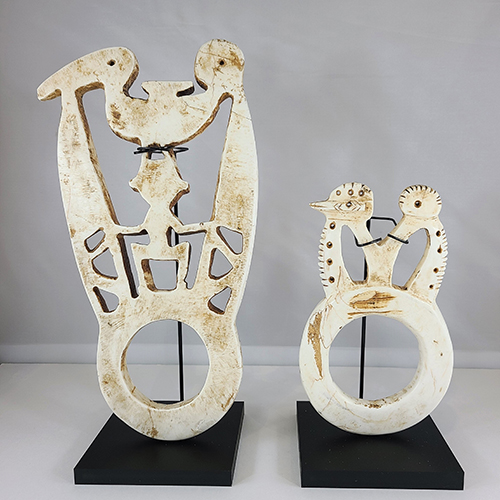Solomon Islands Shell Plaques

The Solomon Islands are located east of New Guinea and consists of 6 larger islands and more than 900 smaller islands. These shell plaques, known as barava, are from Choiseul Island in the western Solomon Islands.
Barava plaques are a national icon in the Solomon Islands, where they are symbols of wealth and prestige. The two shown here represent two different types of barava. Plaques like the smaller one on the right are a widely recognized symbol of wealth. They are depicted on the $2 coin and in the logo of the Solomon Islands Central Bank. They were traded widely.
Barava in the form of the one on the left have a more symbolic meaning and were not exchanged. Each tribe or clan has their own barava as a symbol of tribal identity. The plaque can also act as a land title deed indicating the chief’s claim on the land of the village. However, if the barava is stolen by a rival group the land does not transfer with its possession. It is sacred only to one tribe. As a symbol of prestige, barava plaques have also been placed on graves or mortuary huts where the skulls of important men or slain enemies were kept.
Barava plaques are made from semi-fossilized giant clam shells. They are created by drilling through the shell with a bow drill, then enlarging the initial holes using vines and a sand and water mixture to wear away the shell. Shark skin is used to smooth rough edges. Barava plaques can feature a variety of designs including geometric shapes, stylized humans, birds, and the occasional canoe. It can take as many as six years to make one plaque. Because of this time-intensive process and a shift away from traditional religions, barava are no longer made.
Learn more about exchange in Melanesia through this virtual exhibit.
